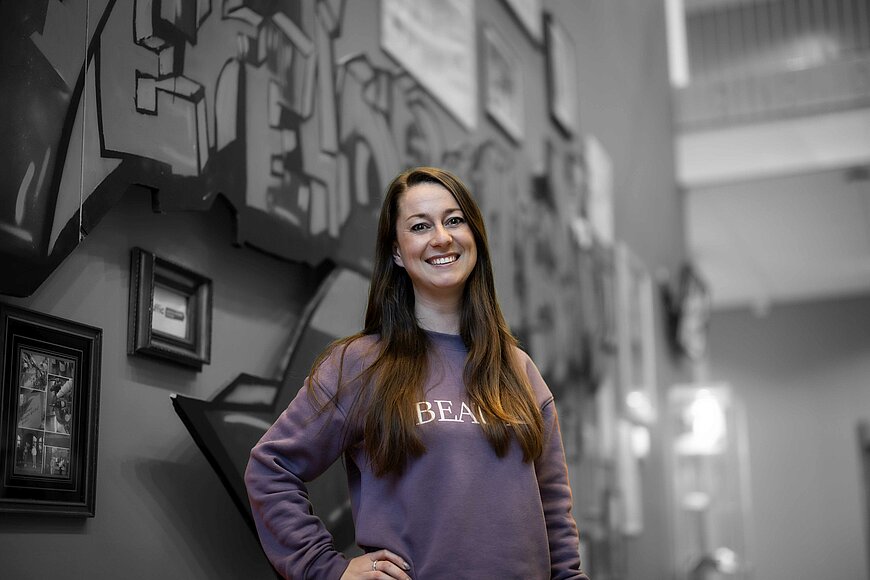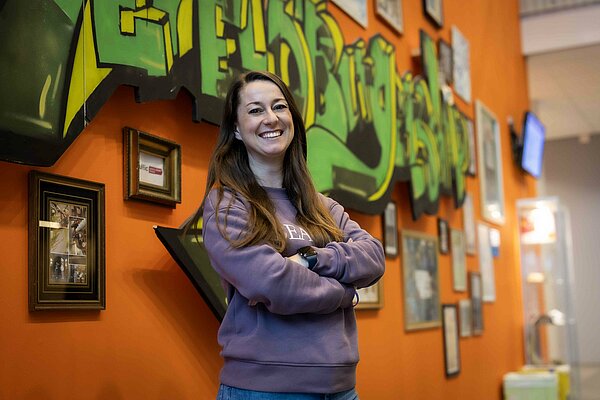'Our school is a reflection of society'

Within the walls of the Stedelijk College in Eindhoven, there is a First Shelter for Foreign Languages (EOA). According to school educator Maxime de Vries, combining regular education with EOA classes is a unique concept. Of the 800 students in total, about 25 percent have an international background. "These two worlds literally come together in our building."
Most (parents of) international students taught at the Stedelijk College aim to continue living in the Netherlands. "They come to live here because, for example, they have fled or are the children of migrant workers." On average, between 150 and 200 students start each school year. But there is a process that precedes this. 'The intake interviews and the first eight to ten weeks take place at a different location. The students take subjects such as NT2, people and society, exercise, and sports. The first level of education is also determined there.'
From traffic rules to traditions
Students expected to have practical education, pre-vocational secondary education, or primary or management-level education are welcomed at the Stedelijk College on the Oude Bossche Baan. The first weeks are devoted to the Dutch language and culture. 'For example, they learn the traffic rules, but also that we eat 'Beschuit Met Muisjes' (literally translated to 'little mice on a rusk') when a baby is born. The faster a student picks up something, the more challenging the material becomes. Shifts within these classes are therefore very normal.'
According to Maxime, the classes really require customization. 'In principle, we speak Dutch, but if we notice that a Syrian student speaks English very well, we provide explanations in English. That student can then help another Syrian classmate who still has difficulty with both Dutch and English. Try taking seven hours of lessons in a language you don't speak. How tiring and difficult is that? We should not be too strict but flexible.'

The person behind the student
According to Maxime, what matters most is the person behind the student. 'Here, you sometimes must look at past behavior and ensure a safe environment. For some, this is the first familiar place in a long time.' She gives a telling example, 'our principal saw a student who was silently looking down and holding his own bloody hand. He suggested cleaning the wound, but the student thought the wound was nothing. "This is really bad," he said, pulling up his trousers and pointing to his leg. My colleague saw a huge scar caused by grenade fragments. At such a moment, the differences in the world really come to the fore.'
Two worlds in one work of art
Many projects are being set up to connect these different worlds of experience and to ensure greater understanding. 'We look for connections with the EOA classes in all grades. For example, fourth-year students give workshops on changing car tires to EOA students, and there are options for students who want to do crafts or play sports with EOA classes.' Which project stood out the most for her? 'That was the project where students explained to each other who they were. Did they come from a sunny country? Did the other person also like football? What does their family look like? They incorporated the similarities into a work of art. In this way, their worlds of experience were combined – in a super creative way.' In addition, contact with parents is also important. 'For example, we organize a moment for parents of students in our EOA department and parents of pre-vocational secondary education (VMBO) years 1 and 2 to eat together. There's also a sing-along evening for parents in which we sing together at school and meet each other, which is also popular.'
According to Maxime, these projects not only help international students integrate but also benefit Dutch young people. 'A mentor student of mine participated in this because she had few social contacts. How beautiful is that? We prepare our students for society here at school. Our school is a reflection of that.'